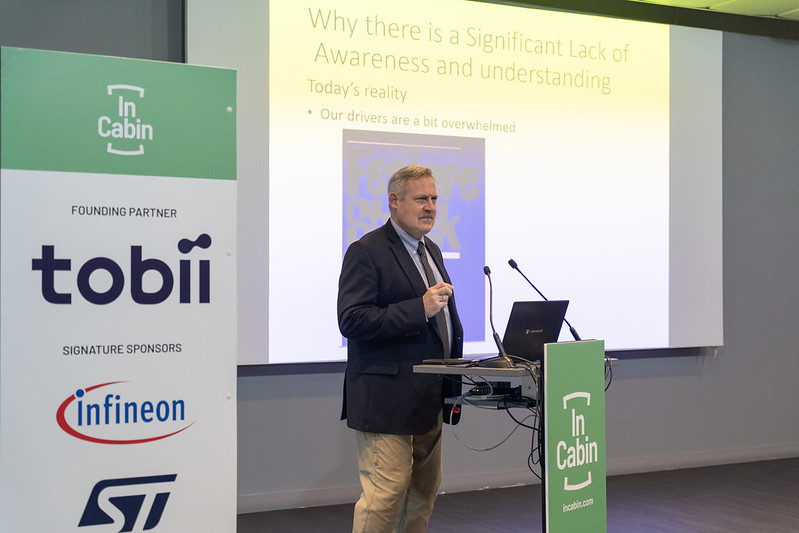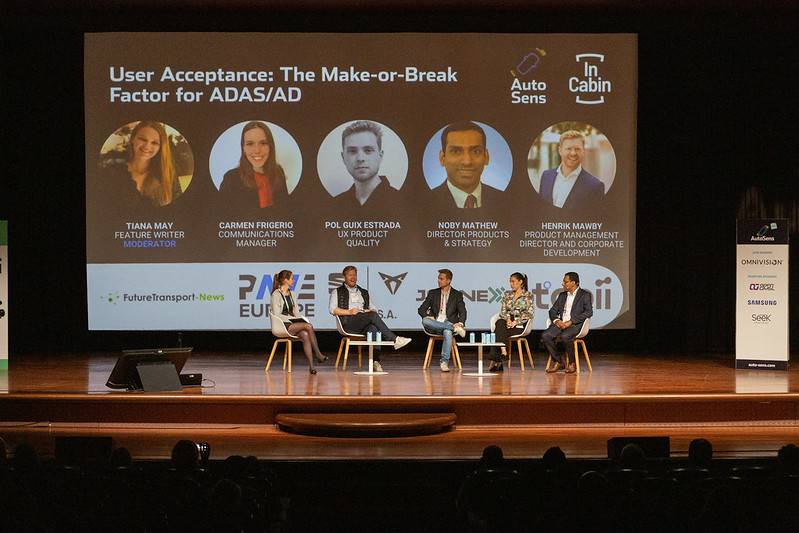As vehicle technology advances, drivers are arguably struggling to keep up and accept new developments. Earlier this month, InCabin Europe examined issues relating to user acceptance and cognitive overload as the automotive industry continues to automate.
User Comprehension
During a keynote speech, David Mitropoulos-Rundus, Senior Engineer at Hyundai America Technical Center noted that drivers now face growing levels of complexity, with cars boasting layers of automation, from adaptive cruise control and lane assistance to gesture-based controls and configurable driving modes. Yet most drivers still rely on the limited training they received between the ages of 15 and 18.
Mitropoulos-Rundus said:
We’re making things easier, but we’re also overwhelming drivers because they don’t always understand everything we’re giving them. Driver education hasn’t evolved at the same pace as vehicle technology.
Currently, the industry falls back on the vehicle handover at the dealership, where the salesperson may walk the new owner through key features. However, Mitropoulos-Rundus noted that this information is often not retained or remembered long-term. The result? Many features go unused, misunderstood or unnoticed.

David Mitropoulos-Rundus, Senior Engineer at Hyundai America Technical Center
© Sense Media
Designing for Drivers
Beyond technological complexity, another challenge lies in the diversity of vehicles people drive. In multi-car households, rentals, or company fleets, drivers move between models with different layouts, controls and interfaces. Standardisation across vehicle lines with consistent control placement, labelling, and interface logic could therefore significantly reduce confusion.
What’s more, Mitropoulos-Rundus highlighted that many drivers never change their default settings. Whether through lack of awareness, confidence, or opportunity, they leave their vehicles configured exactly as delivered. As such, it is important for designers to make sure the default settings are what most people actually want.
He emphasised that defaults should be informed by user testing and focus groups—not by engineering convenience. At the same time, customisation should remain available for more engaged users.
To further overcome the challenges, Mitropoulos-Rundus also offered a range of practical guidance based on human factors research:
- Design in context: Test interfaces as they will be used—by people driving, not sitting comfortably at a computer.
- Test usability early and often: It is cheaper and far more effective to learn during design than after launch.
- Make help accessible: Integrate simple, on-screen explanations or pop-up icons for new features—always available, never intrusive.
- Embrace standardisation: Ensure consistency within and across brands to ease the learning curve.
Overall, Mitropoulos-Rundus reminded designers that while drivers have adapted to extraordinary change, their basic cognitive limitations remain the same. The key to better design lies not in removing innovation, but in delivering it with empathy, clarity and restraint. The car of the future, after all, should serve the driver—not the other way around.
User Acceptance
With the increased rollout of ADAS and autonomous driving technologies, user acceptance has also emerged as a critical determinant of success. During the event’s closing panel, industry experts emphasised that public confidence and trust, rather than a reliance on technical performance, will decide how widely these innovations are adopted.

The closing panel discussion
© a2b Global Media
Cognitive understanding remains central to acceptance. As Henrik Mawby, Product Management Director at Tobii noted, users struggle when systems act in ways they don’t understand. When drivers are not able to comprehend feedback from the vehicle, it undermines trust.
As such, transparency is central to acceptance. Drivers must be able to see why a system intervenes rather than feeling disoriented or harassed by alerts or actions. In fact, Pol Guix Estrada, UX Product Quality at SEAT, argued that confusion and annoyance can be more dangerous in driving than distraction.
To address these issues, human factors research, once treated as a post-development validation step, is now being embedded earlier in product design. Noby Mathew, Director Products & Strategy at JOYNEXT noted an increased focus on integrating user experience with ADAS technologies, so that end users benefit from L2+ systems for their own convenience.
This focus is equally crucial as vehicles evolve towards full autonomy. Carmen Frigerio, Communications Manager at PAVE Europe, observed that the psychological leap between assisted and autonomous driving is significant. Indeed, in a fully autonomous car, there is no steering wheel to take back, so you must trust the system completely. Education and direct experience are therefore essential to building this trust, as currently, public understanding remains low.
Ultimately, the discussion at InCabin Europe underscored a shared message: technology alone cannot guarantee progress. Trust must be earned through clarity, reliability, and meaningful communication between people and machines. As automation advances, the success of advanced driver assistance and autonomous systems will depend on how well drivers and passengers understand, accept, and feel supported by them.
Read more from AutoSens and InCabin 2025:
Tags
link

